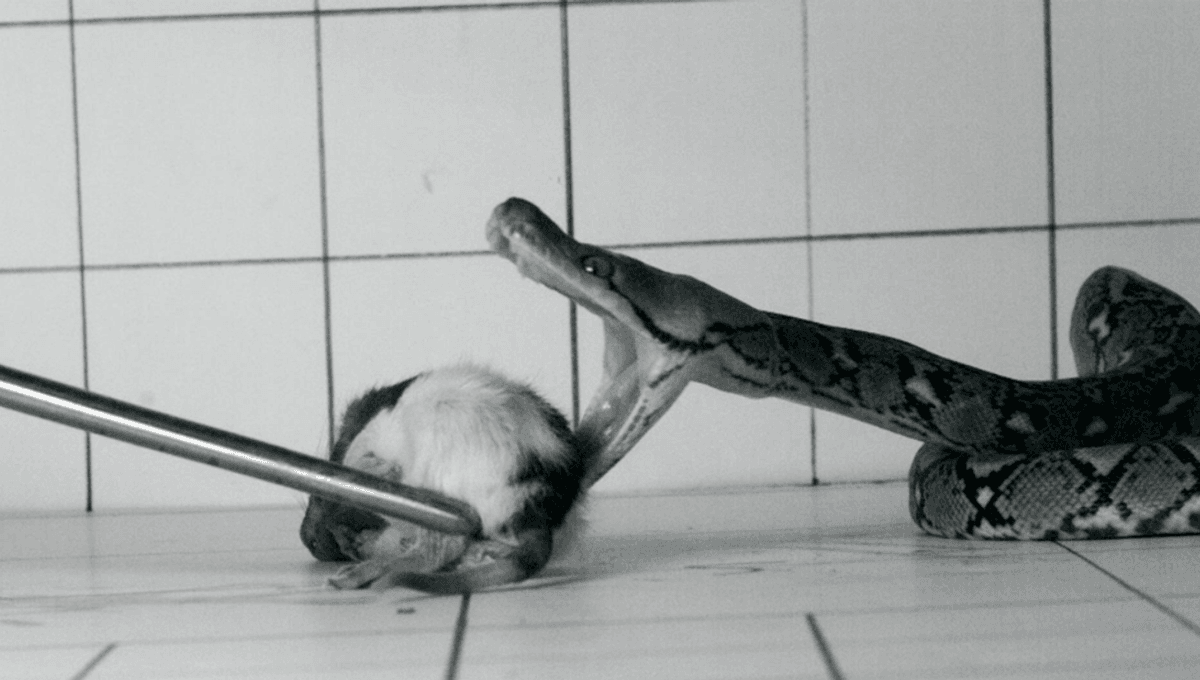
Snake fangs get a lot of attention, from their use in creating anti-venom to figuring out how they evolved. One area of research has now gone beyond just the fangs, looking at the way that all of the teeth and their morphology are related to the whole of the snake as it moves in response to prey.
Researcher Bill Ryerson found that looking closely at the form of the teeth could tell him more about the different feeding strategies different snakes were using. And by closely, we mean really closely. Ryerson took CT scans of nearly 70 snakes belonging to 13 species to look at the tooth morphology of not just the fangs, but the rest of the teeth within the mouth too. Using snazzy high-speed video cameras, he also collected footage of the different species attacking prey items.
“I think the other teeth have been overlooked for a few reasons. First was that because venom is such an interesting development for vertebrates, the fangs naturally drew a lot of attention. The second is that the differences in the non-fang teeth are not as obvious at first glance,” Ryerson told IFLScience.
This information helped Ryerson sort the snakes – which included northern copperheads, reticulated pythons, boa constrictors, Kenyan sand boas, California kingsnakes, Brook’s kingsnakes, Arizona mountain kingsnakes, and Brazilian rainbow boas – into two categories.
Boa constrictors and pythons, for instance, were categorized as “strikers”, with lightning-fast attacks that typically came from above their prey. King snakes, on the other hand, were classed as “lungers” and attacked much more straight on. They attacked much more slowly, however, at 1.5 meters per second compared to the speedy strikes of the pythons at 2.7 meters per second.
The lungers “strike more slowly and don’t open their mouths as wide,” said Ryerson in a statement sent to LiveScience. “They make contact with both jaws simultaneously.”
The teeth of lungers were broad and curved along the lengths of the jaws and during the attacks, the lower teeth impaled the prey first to help the snake secure it. The strikers had more variation in their dentition, with tall teeth at the front of the lower part of their mouth and short, broad, and curved teeth at the back; this curvature helps the snake swallow its prey.
“The main difference between the two groups is that ‘strikers’ have very narrow, upright teeth in their lower jaws, related to how that part makes first contact and acts as a pivot point for the rest of the head to rotate over,” Ryerson told IFLScience. “The “lungers” have shorter, more curved teeth that work to grip the prey so it can’t escape. They typically aren’t venomous or use constriction.”
“I was surprised at well the different strike types separated out, and how well the tooth morphology could predict the different types of strikes,” said Ryerson, who plans to investigate more species, speaking to LiveScience. Those investigations aim to see if the pattern continues or if, by looking at snake species that live in trees or underground, a whole new category could emerge.
Ryerson recently presented the research at the annual meeting of the Society for Integrative and Comparative Biology. The work was also published in a book, Snakes: Morphology, Function, and Ecology, edited by David Penning.
Source Link: Snakes Revealed As “Lungers” Or “Strikers” In Mesmerizing Slow Motion Footage